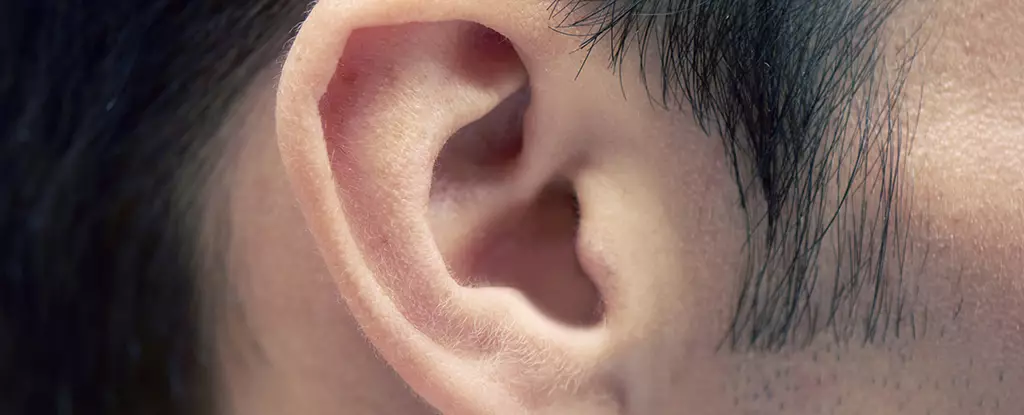Parkinson’s disease remains a harrowing challenge—crippling millions and often diagnosed only after symptoms have already grabbed hold. The quest for earlier detection is more than a medical ambition; it’s a humanitarian imperative. Amid the labyrinth of complex diagnostic tools and expensive imaging techniques, a provocative idea has emerged: could something as unassuming as earwax hold the key to detecting Parkinson’s disease far sooner and more efficiently?
The answer might lie in volatile organic compounds (VOCs). These are tiny molecules released by our bodies, often imperceptible but rich with biochemical information. Earlier studies pointed out how Parkinson’s subtly warps our body odor by altering sebum—the oily layer on the skin. However, sebum’s exposure to the environment rendered it unreliable for clinical tests. Earwax, remarkably sheltered within the ear canal, offers a protected biochemical snapshot, less contaminated by external factors, making it a promising candidate for examination.
Unearthing Chemical Clues: The Science Behind the Smell
A team from Zhejiang University recently embarked on one of the first rigorous investigations into this novel avenue. By collecting ear canal swabs from over 200 individuals—about half diagnosed with Parkinson’s—they scoured for distinctive VOC patterns. Their findings spotlighted four chemical compounds: ethylbenzene, 4-ethyltoluene, pentanal, and 2-pentadecyl-1,3-dioxolane, each potentially signaling Parkinson’s presence.
One could be skeptical: earwax as a diagnostic goldmine? It challenges conventional medical paradigms that place trust in sophisticated imaging and neurological tests over something so commonplace. But this method’s appeal is its simplicity, accessibility, and potential to democratize Parkinson’s diagnosis worldwide. Instead of patients waiting months or years for confirmation, imagine a swab-based test providing vital clues swiftly.
The Promise and Peril of AI in Medical Diagnostics
Harnessing machine learning, the researchers pushed boundaries further. Their artificial intelligence olfactory system (AIO) crunched the VOC datasets, identifying Parkinson’s with a reported 94.4% accuracy. This integration of AI feels like the future knocking on our door—a future where bedside diagnostics might transform lives with immediacy and precision.
Yet, this triumph must be tempered with caution. The sample size, though respectable, is still too small to warrant immediate clinical application. The AI’s performance may falter when exposed to diverse populations, different ethnic backgrounds, or variable disease stages. Moreover, AI models can inherit biases and produce misleading conclusions if not thoroughly vetted. It’s a high-stakes gamble, but one worth pursuing with rigorous scrutiny.
Why Early Diagnosis Matters Beyond Medicine
Beyond the lab coat and diagnostic jargon, the human implications are staggering. Parkinson’s progressively erodes motor control, independence, and quality of life. An earlier and more reliable diagnosis could empower patients and their families to make informed decisions sooner—safeguarding mental health, optimizing therapy, and opening doors to experimental treatments when they might be most effective.
Furthermore, this chemical approach to diagnosis might illuminate Parkinson’s elusive origins. VOC shifts could serve as fingerprints of the neurodegenerative cascade—highlighting inflammation, cell stress, or metabolic dysfunction before symptoms erupt. Such insights could recalibrate our research focus from reactive treatment to proactive prevention.
Challenges on the Road Ahead
Despite this exciting frontier, considerable obstacles remain. Translating VOC signatures from earwax into a standardized clinical test demands bigger and more ethnically diverse cohorts. Variability between populations, disease stages, and even environmental factors could muddy the waters, complicating the development of universally reliable biomarkers.
Additionally, earwax collection, while non-invasive, isn’t without its own standardization challenges. Sampling technique, ear hygiene, and even seasonal changes might influence VOC profiles. The medical community must carefully design protocols to minimize confounders and validate reproducibility before rushing to embrace this approach.
A Leap Toward Accessible Neurological Care
If this line of research maintains momentum, it could herald a shift toward more equitable neurological diagnostics—a pressing concern given healthcare disparities worldwide. Instead of relying solely on expensive brain imaging centers often inaccessible in low-resource areas, a simple ear swab coupled with AI analysis could revolutionize early intervention, especially in underserved communities.
Yet, it is imperative to balance excitement with a skeptical rigor. Novel, elegant solutions such as VOC analysis in earwax cannot simply upscale from small trials to mass application without thorough validation. The medical field must resist the allure of quick fixes and stay steadfast in methodical verification to truly benefit patients.
—
In embracing innovation like this, we glimpse a future where debilitating diseases are caught early, treatments are timely, and science inches closer to breakthroughs—powered by insights nestled in the most unexpected places, like the ear canal. The stakes are high, but so is the potential for transformative impact.


Leave a Reply